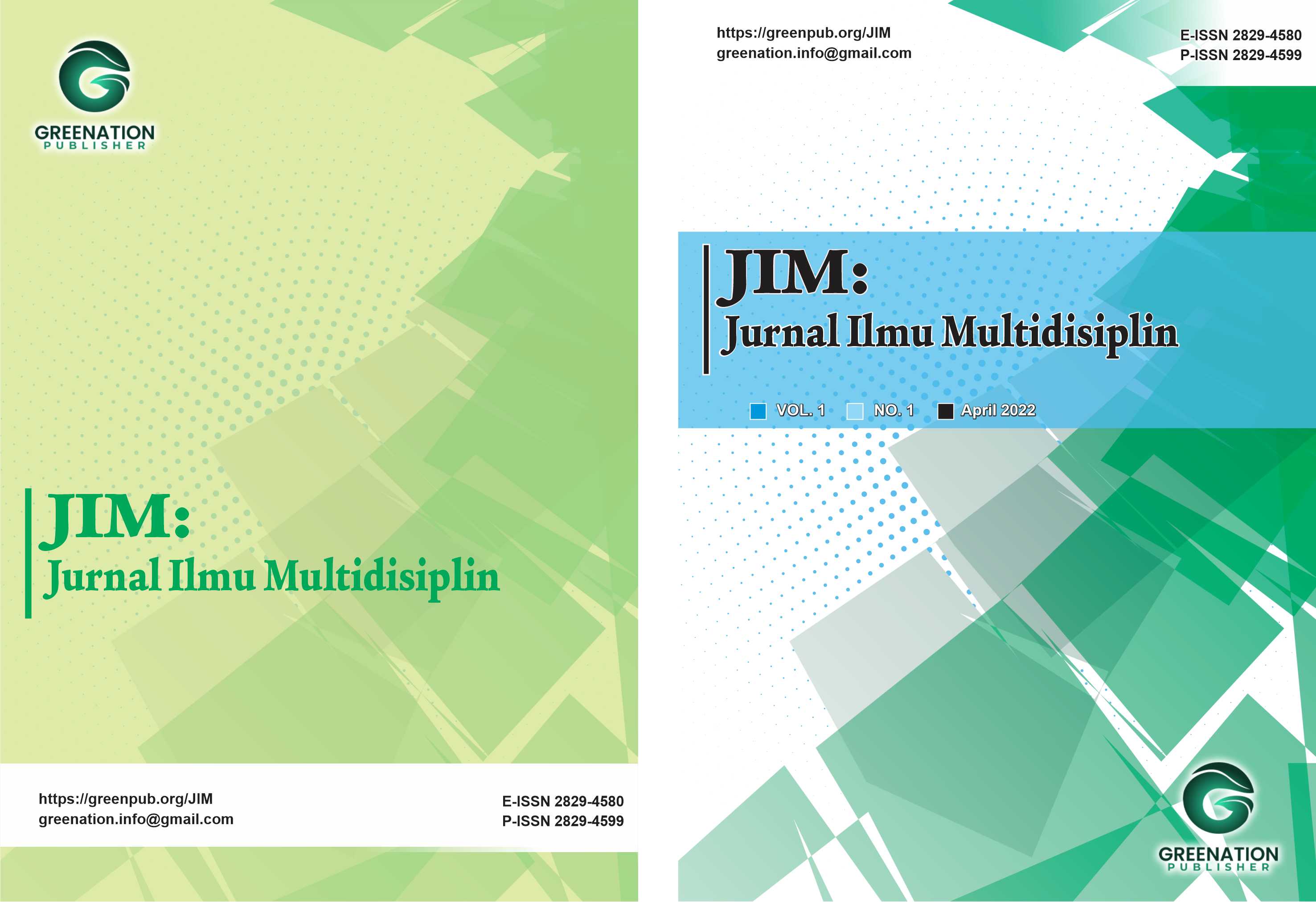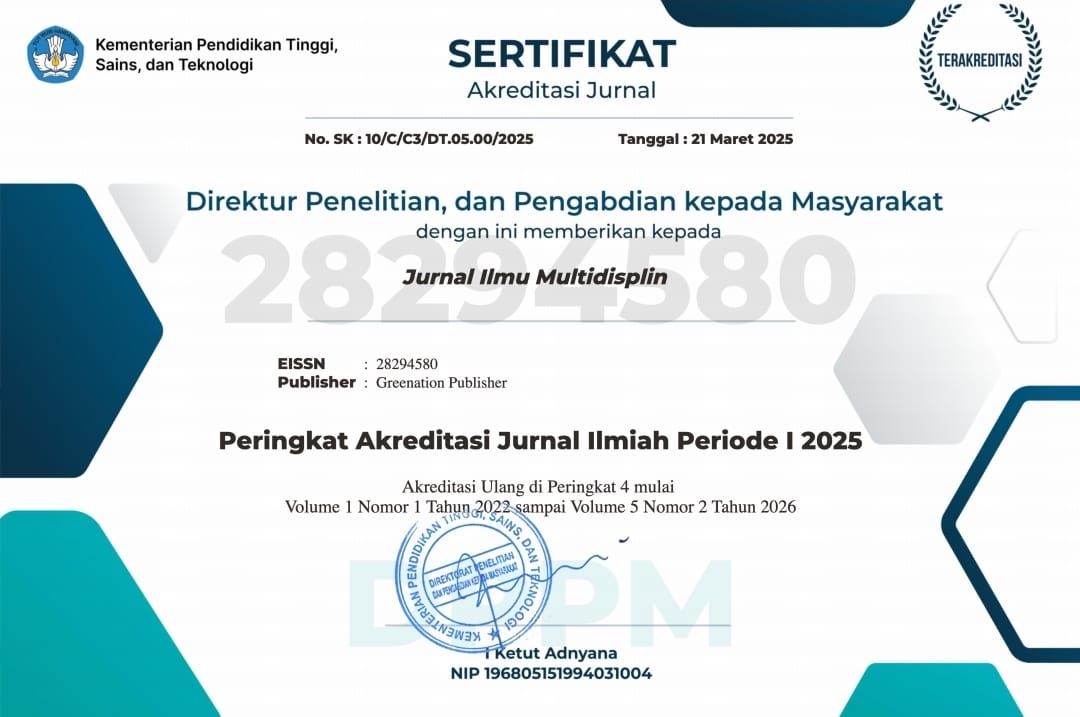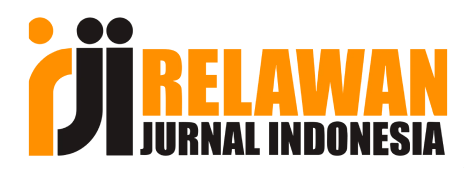Tracer Study Analysis of Graduates of SMK Karsa Mulya Palangkaraya for Talent Mapping Adaptive to the Needs of Business and Industry
DOI:
https://doi.org/10.38035/jim.v4i3.1155Keywords:
Tracer Study, SMK, Talent Mapping, World of Work, Vocational EducationAbstract
The purpose of the study was to analyze the results of the tracer study of graduates of SMK Karsa Mulya Palangkaraya, which became the basis for mapping talents associated with the needs of business and industry. The existence of a match between the competencies of graduates of SMK Karsa Mulya Palangkaraya and the demands of business and industry (Dudi) is one of the indicators of success in vocational education. This study used a Mixed Methods approach with a Sequential Explanatory design, which is a quantitative approach followed by qualitative to provide an in-depth understanding of the preliminary results. This approach was chosen because the purpose of the study was not only to measure the level of absorption of SMK Karsa Mulya Palangkaraya graduates in the world of work, but also to map the potential and talents of graduates based on the needs of the business and industrial world (DUDI). The data collected included graduate employment, curriculum relevance, skills used in the workplace, and waiting time in getting a first job. The results show that most graduates work according to their expertise but there are still gaps in some technical and non-technical skills needed in the industrial world. The study recommends increased collaboration between SMK Karsa Mulya Palangkaraya and industry partners, as well as continuous evaluation of the curriculum and apprenticeship program.
References
Badan Nasional Sertifikasi Profesi. (2022). Standar Kompetensi Kerja Nasional Indonesia (SKKNI) Bidang Otomotif dan Desain Komunikasi Visual. Jakarta: BNSP.
Direktorat Jenderal Pendidikan Vokasi, Kementerian Pendidikan dan Kebudayaan Republik Indonesia. (2020). Tracer Study Pendidikan Vokasi. Jakarta: Kemendikbud.
Direktorat SMK. (2020). Panduan Pelaksanaan Tracer Study SMK. Jakarta: Direktorat Jenderal Pendidikan Vokasi, Kemendikbud.
Farianda. (2013). Manajemen Sumber Daya Manusia.Yogyakarta: Graha Ilmu
Ghozali, I. (2018). Aplikasi Analisis Multivariate dengan Program IBM SPSS 25. Semarang: Universitas Diponegoro.
Hudari. N. (2005) Perencanaan SDM. Yogyakarta: Gadjah Mada University Press.
Inayati. D.A. (2020) Talent Management. Jakarta: PT Gramedia Pustaka Utama.
Jackson.Schuler.Werner. (2011). Pengelolaan Sumber Daya Manusia. Jakarta.: Salemba Empat.
Kemendikbud Ristek. (2022). Kurikulum Merdeka untuk SMK: Konsep dan Implementasi. Jakarta: Direktorat Jenderal Pendidikan Vokasi.
Miles, M. B., Huberman, A. M., & Saldaña, J. (2014). Qualitative Data Analysis: A Methods Sourcebook (3rd ed.). California: Sage Publications.
Paryono. (2019). The role of TVET in the era of Industry 4.0. In Journal of Technical Education and Training, 11(1), 1–11. [https://doi.org/10.30880/jtet.2019.11.01.001] (https://doi.org/10.30880/jtet.2019.11.01.001)
Peraturan Presiden Republik Indonesia Nomor 68 Tahun 2022 tentang Revitalisasi Pendidikan dan Pelatihan Vokasi.
Suparlan, S., & Hartati, S. (2021). Tracer Study untuk Evaluasi dan Pengembangan Kurikulum Sekolah Menengah Kejuruan (SMK). Jurnal Pendidikan Vokasi, 11(3), 301–309. [https://doi.org/10.21831/jpv.v11i3.41099] (https://doi.org/10.21831/jpv.v11i3.41099)
Sutrisno, E. (2016). Manajemen Sumber Daya Manusia. Jakarta: Kencana Prenada Media Group.
Schomburg, H. (2003). Handbook for Graduate Tracer Studies. Kassel: Centre for Research on Higher Education and Work, University of Kassel.
Schumann. M. S. (2010. Brand For Talent. Jakarta: PPM.
Siagian. (2015). Manajemen Sumber Daya Manusia. Jakarta: PT Bumi Aksara.
Silzer, R., & Dowell, B. E. (2010). Strategy-Driven Talent Management: A Leadership Imperative. San Francisco: Jossey-Bass.
World Bank. (2019). Indonesia Skills Report: Trends in Demand, Gaps, and Supply. Washington DC: World Bank Publications. [https://documents.worldbank.org/] (https://documents.worldbank.org/)
World Economic Forum. (2020). The Future of Jobs Report 2020*. Geneva: World Economic Forum. [https://www.weforum.org/reports/the-future-of-jobs-report-2020] (https://www.weforum.org/reports/the-future-of-jobs-report-2020)
Downloads
Published
How to Cite
Issue
Section
License
Copyright (c) 2025 Rasmi Widya Rani, Veitzhal Rivai, Azis Hakim

This work is licensed under a Creative Commons Attribution 4.0 International License.
You are free to:
- Share— copy and redistribute the material in any medium or format
- Adapt— remix, transform, and build upon the material for any purpose, even commercially.
The licensor cannot revoke these freedoms as long as you follow the license terms.
Under the following terms:
- Attribution— You must give appropriate credit, provide a link to the license, and indicate if changes were made. You may do so in any reasonable manner, but not in any way that suggests the licensor endorses you or your use.
- No additional restrictions— You may not apply legal terms or technological measures that legally restrict others from doing anything the license permits.
Notices:
- You do not have to comply with the license for elements of the material in the public domain or where your use is permitted by an applicable exception or limitation.
- No warranties are given. The license may not give you all of the permissions necessary for your intended use. For example, other rights such as publicity, privacy, or moral rightsmay limit how you use the material.




























